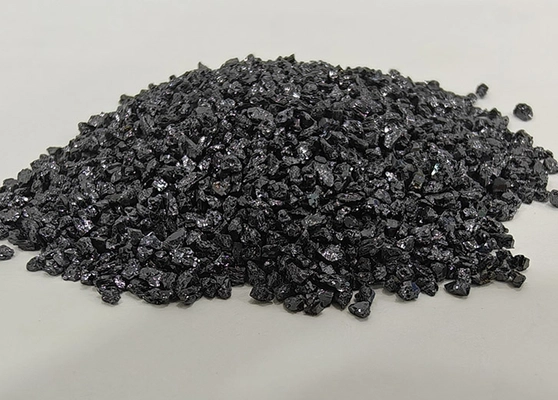Quick Answer: Silicon carbide (SiC) typically has a density of 3.21–3.22 g/cm³. This high density, combined with extreme hardness and thermal conductivity, makes SiC ideal for demanding environments such as semiconductors, aerospace components, and energy systems.
Table of Contents
- Overview of Silicon Carbide
- Unique Properties of Silicon Carbide
- What Is the Density of Silicon Carbide?
- Significance of Silicon Carbide Density
- Factors Affecting Density
- Applications Based on Density
- Measuring the Density of SiC
- Conclusion
- FAQ
Overview of Silicon Carbide
Silicon carbide (SiC) is a hard and durable material composed of silicon and carbon. With hardness close to diamond, SiC offers excellent wear resistance, high temperature strength, and superior thermal conductivity, making it invaluable for many industrial and electronic applications.
Unique Properties of Silicon Carbide
- Extremely high hardness (Mohs 9–9.5)
- High thermal conductivity (120–200 W/m·K)
- Wide bandgap semiconductor (3.2 eV)
- Excellent chemical and oxidation resistance
- Low thermal expansion (4–5.6 × 10⁻⁶ /°C)
- Lightweight and stable structure
What Is the Density of Silicon Carbide?
Generally, silicon carbide has a density of 3.21–3.22 g/cm³. The exact value depends on purity, porosity, and manufacturing method. High-purity crystalline SiC typically has a higher density compared to sintered or porous SiC ceramics.
The Significance of Silicon Carbide Density
Density plays a crucial role in determining silicon carbide’s performance:
- Higher density → higher mechanical strength and hardness
- Higher density → better thermal conductivity
- Higher density → improved chemical and oxidation stability
- Higher density → superior dimensional stability and corrosion resistance
Factors Affecting Silicon Carbide Density
1. Purity of Material
Impurities reduce atomic packing efficiency and decrease density. High-purity SiC (≥ 99%) yields better physical and thermal properties.
2. Manufacturing Process
Different sintering methods (reaction-bonded, pressureless sintering, hot pressing, or CVD) lead to different densities.
3. Crystal Structure
SiC occurs in several polytypes: cubic (3C-SiC) and hexagonal (4H, 6H-SiC), each with slightly different densities.
4. Porosity
Higher porosity lowers effective density, reducing mechanical and thermal performance.
5. Synthesis Conditions
Temperature, pressure, and sintering atmosphere affect crystal growth and void formation, directly impacting final density.
6. Additives and Sintering Aids
Additives like boron or aluminum oxide can change microstructure and densification rate, influencing density and mechanical performance.
Applications of Silicon Carbide Based on Its Density
With a density around 3.21 g/cm³ and outstanding strength-to-weight ratio, SiC is widely used in industries requiring durability, heat resistance, and efficiency:
- Electronics: High-voltage semiconductors, MOSFETs, diodes.
- Aerospace: Structural and thermal management components.
- Energy: Nuclear reactor materials and high-temperature heat exchangers.
- Automotive: EV components, ceramic brake discs, power modules.
- Industrial Abrasives: Black SiC abrasives and green SiC microgrits for grinding and polishing.
Measuring the Density of Silicon Carbide
| Method | Application |
|---|---|
| Archimedes’ Principle | For solid, non-porous samples; provides accurate bulk density. |
| Helium Pycnometry | Ideal for powders or porous materials; measures true density including closed pores. |
| X-ray Diffractometry (XRD) | Determines crystal structure and theoretical density. |
| Ultrasound Velocity | Measures material uniformity and elastic modulus. |
| Water Displacement | Simple method for irregular samples. |
Conclusion
Silicon carbide’s density is one of the key parameters defining its superior performance in harsh environments. Together with its hardness, thermal conductivity, and chemical stability, SiC stands out as an indispensable material in modern industries—from abrasives to semiconductors and advanced ceramics.
FAQ: Silicon Carbide Density
What is the density of silicon carbide?
Typically around 3.21–3.22 g/cm³, depending on purity and crystal structure.
Why does silicon carbide’s density matter?
Density affects mechanical strength, heat conduction, and chemical stability, determining performance in demanding applications.
Does density vary between SiC types?
Yes. Polytypes like 3C-SiC, 4H-SiC, and 6H-SiC differ slightly due to atomic stacking, resulting in small density differences.
How can silicon carbide density be improved?
By using higher purity raw materials, optimizing sintering parameters, and reducing porosity through additives or hot pressing.
What industries rely on high-density SiC?
Electronics, aerospace, automotive, and refractory applications where durability and heat resistance are critical.
Request a Quote or Sample
Popular Products
Grünes Siliziumkarbid
View DetailsSchwarzes Siliziumkarbid
View Details